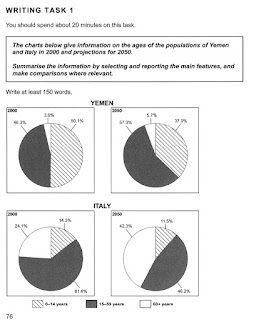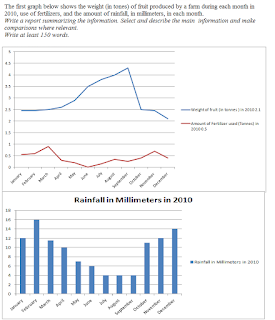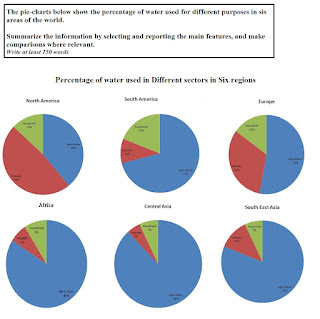The Bar Chart below shows the percentage of Australia men
and women in different age groups who did regular physical activity in 2010.
Summarize the information by selecting and rwepotung the
main features, and make comparisons where relevant.
The given bar chart elucidates
proportion of men and women involved in some kind of physical activity in
different age groups in Australia in 2010.
Overall, most males were physically active in the
youngest age group, while females in 45- 54, and patterns of age participation
of males and females were in contrast to each other, except in the oldest men and women, 65 and above, where ratio was almost similar.
Highest number of males were
active physically from 15 – 24 years, 52.8%. Beyond that there was a dip in the
percentage of males until 35-44, 39.5%. The ratio registered a gradual rise with
advancment of age: from 45-54, 43.1% , 45.1% in 55-64 age group, and 65 and over, 46.7%.
In contrast, the only 47.7%
women were active between 15 and 24 years. The ratio witnessed an increment as
the age rose, 48.9% in 25-34, 52.5% in 25-44 and 53.3% in 45-55. After this,
participation of females declined to 47.1% in age group 65 and over.



















